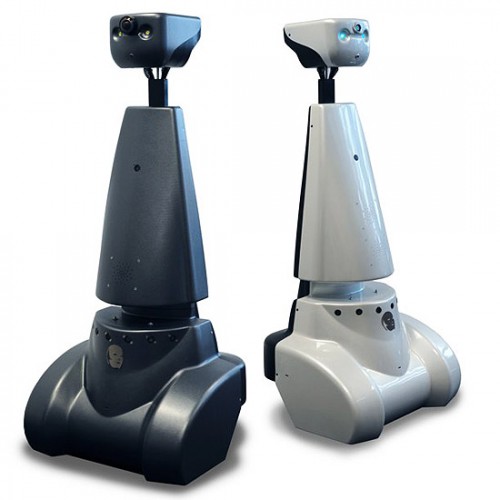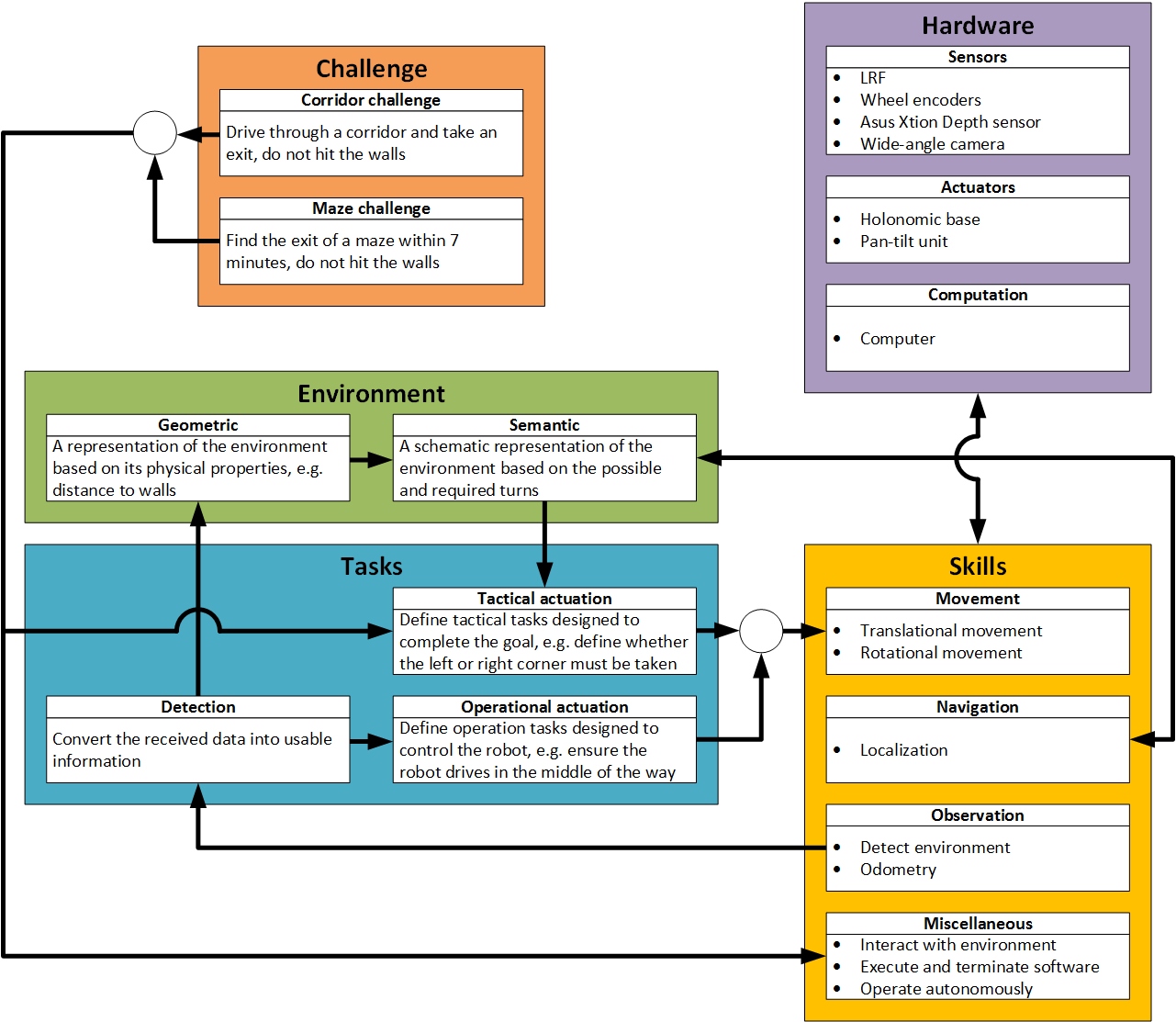Embedded Motion Control 2016 Group 1: Difference between revisions
| Line 126: | Line 126: | ||
'''Hardware''': This contains the physical hardware of the robot. These are the sensors and actuators that have previously been discussed as well as the computer. | '''Hardware''': This contains the physical hardware of the robot. These are the sensors and actuators that have previously been discussed as well as the computer. | ||
[[File:Specifications.jpg|center|800px]] | |||
Revision as of 00:15, 30 April 2016
Group Members
| 0878154 | Wouter Scholte |
| 0979324 | Goksan Isil |
| 0976279 | Muhammed Erşat Emek |
| 0979770 | Stefan Kojchev |

Introduction
The objective of the Embedded Motion Control course is to acquire knowledge and insight about the design and implementation of embedded motion systems. Or more explicitly said it is about software design and application to autonomous robots. For the purpose of learning these objectives, practical assignments using the Pico and Taco robots shown in Fig.1 will be conducted. These assignment involve the robot autonomously solving the corridor and maze challenge.
Design Architecture
In this section overview of the system requirements, specifications, functions, components and interfaces is given.
Requirements
The requirements for the corridor and maze challenge were found and grouped using the FURPS method (Functionality Usability Reliability Performance Supportability).
- The Pico/Taco robot must solve the corridor and maze challenge.
- The corridor challenge must be solved within two attempts of maximum 5 minutes total.
- The maze challenge must be solved within two attempts of maximum 7 minutes total.
- Must not be at a standstill for more than 30 seconds.
- Maze solving algorithm must be implemented. It must be taken into consideration that the robot might start/be inside a loop or encounter a dead-end.
- Entire rear wheels must be across the finish line.
- The Pico/Taco robot must take the desired turns, not drive into walls and recognize doors.
- The Pico/Taco robot must operate autonomously.
- The Pico/Taco robot must be able to send a signal to open the doors.
- Only one executable has to be called to start the software.
- Use given hardware
- Design must be reliable.
- To validate the design it will be tested and simulated.
| Requirement | F | U | R | P | S |
|---|---|---|---|---|---|
| Solve corridor/maze | x | x | |||
| Navigate appropriately | x | x | |||
| Operate autonomously | x | x | |||
| Send signals | x | ||||
| Execution of software | x | ||||
| Use given hardware | x | ||||
| Reliable design | x |
Specifications
The specifications can be divided over different contexts, this can been seen in Fig 2. The following contexts were used:
Challenge: Challenges are Corridor and Maze Challenges. In both challenges PICO have to calculate and follow true trajectory for exit without any collision to walls within 5 minutes for Corridor and 7 minutes for Maze Challenge. In addition to a corridor, Maze Challenge contains loops, door and complicated maps.
Environment: For a better representation of the environment both geometric and semantic maps are made. Furthermore the geometric map is required to create the semantic map and detect doors.
Skills: Skills of the PICO robot that are satisfactory/sufficient in order to find its way out of the maze can be categorized into 4 groups: Movement skills provided by omni-wheels allow PICO to change its position and orientation along the maze, which is the most important capability to complete the challenges. Observational skills provided by the sensors allow PICO to detect its surroundings (corridors, corners, doors, etc.) which provides awareness to make other skills useful. Navigational skills come from the interpretation of the detected data through the selected maze solving algorithm, that provides a dynamically forming path (a global path is not possible since we don't have access to the entire maze at a given time) to make a way out of the maze. Other skills worth noting are enabled by the software running in real-time: Interacting with the environment when a relevant observation is made and the autonomous operation enabled (also limited) by the finite-state-machine.
Tasks: This contains the tactical actuation, operational actuation and detection. The tactical actuation defines tasks in order to complete the goal, while the operational actuation defines tasks to control the robot based on the detection task. The detection task converts received data into useful information and sends it to the operational actuation which decides upon a new control action.
Hardware: This contains the physical hardware of the robot. These are the sensors and actuators that have previously been discussed as well as the computer.
